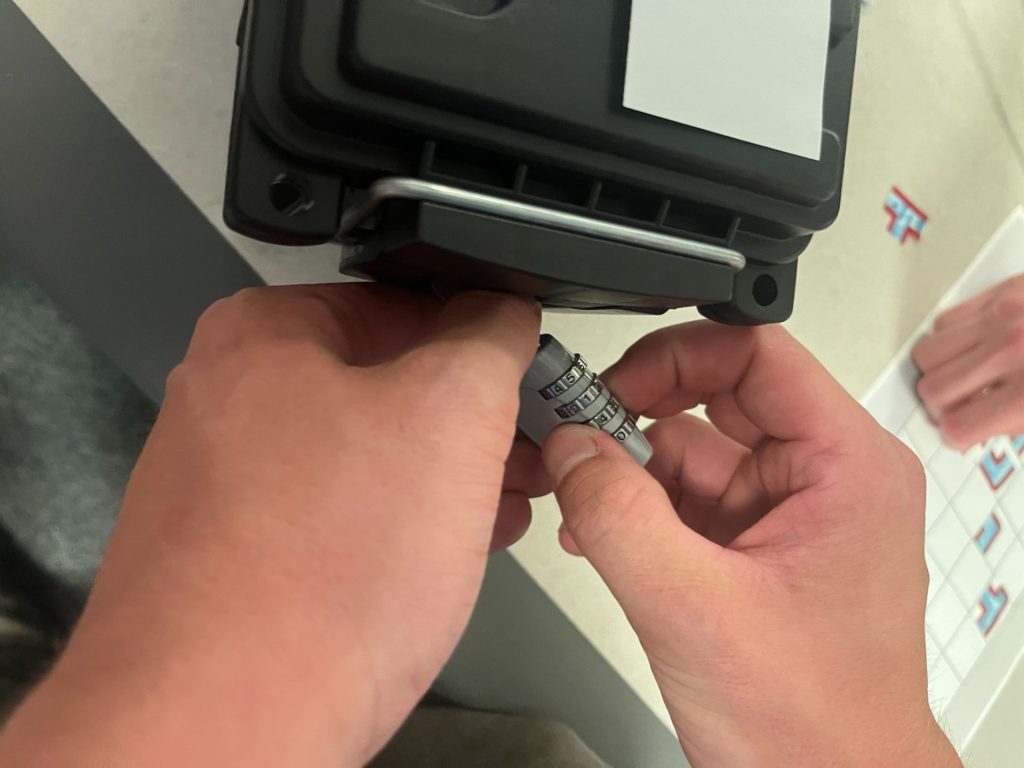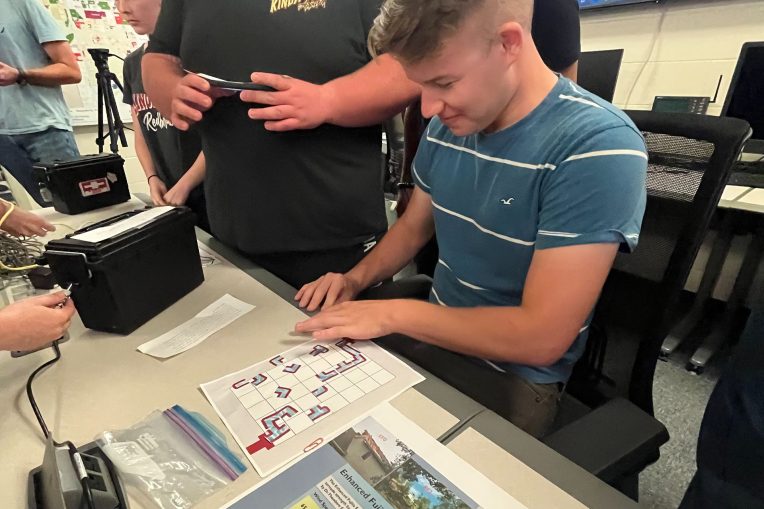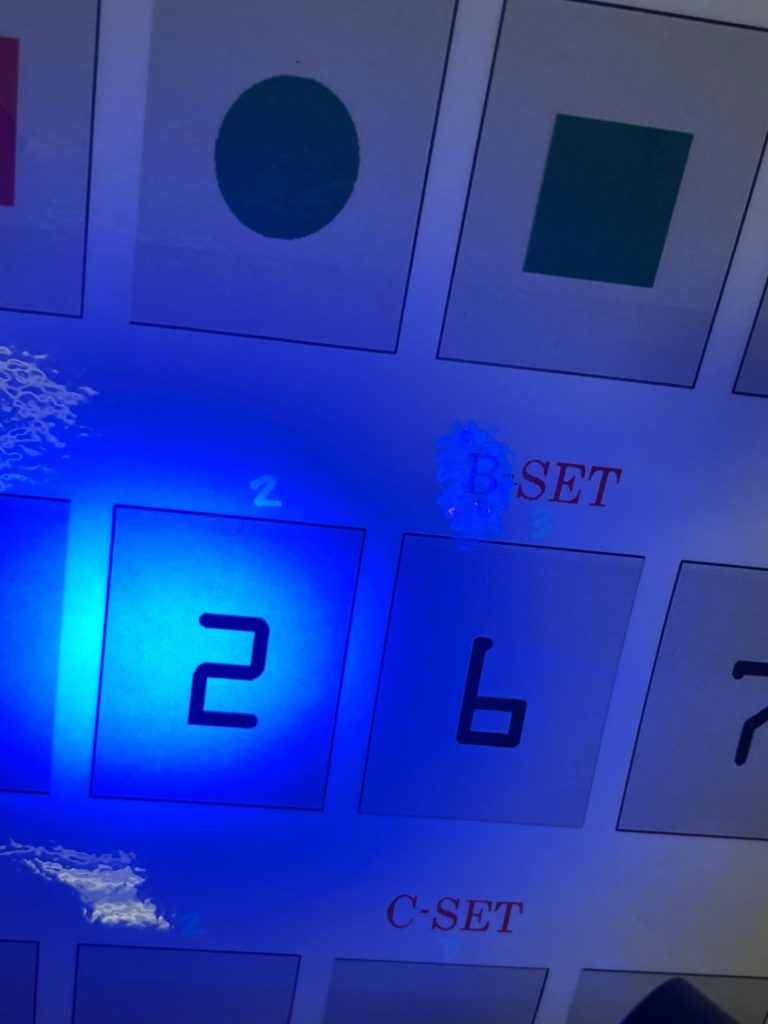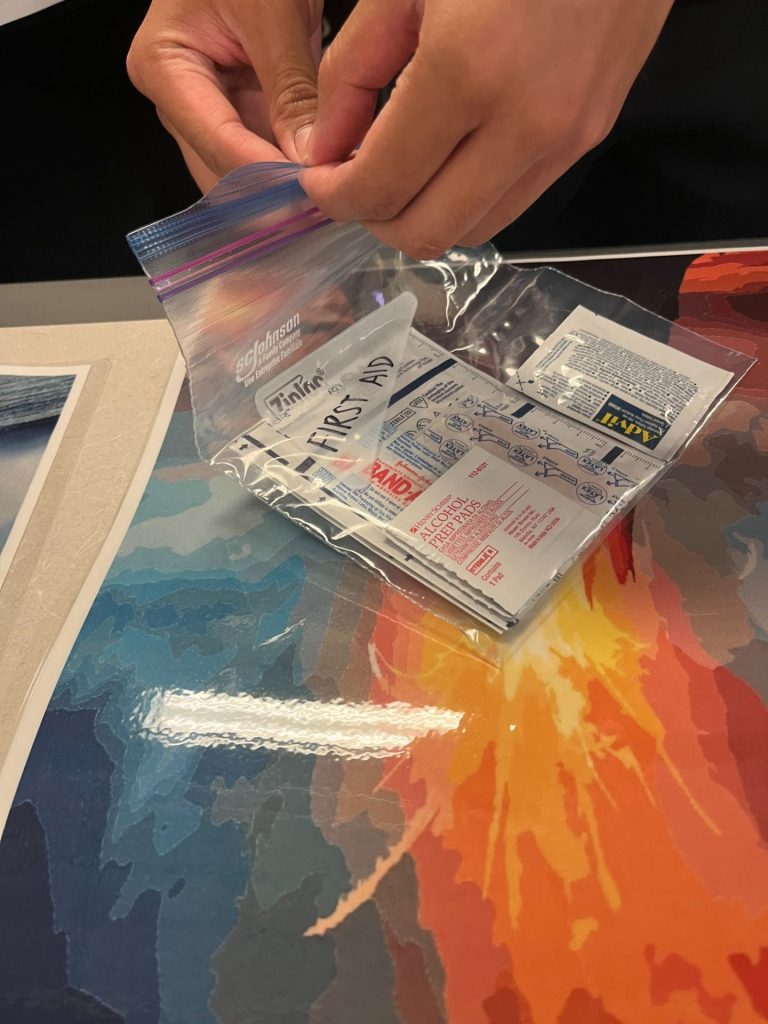Although the forecast calls for generally calm weather in Normal this week, a “tornado” is expected to rip through the Circus Room of the Bone Student Center Wednesday, September 27, and teams of students will be tasked with solving puzzles to stay safe.
More than 100 students are registered to participate in Escape the Nest, an emergency-preparedness-themed pop-up escape room created by 20 students from Assistant Professor Simone Downie’s Games and Society class in collaboration with Illinois State University Emergency Management.
Teams of five or six will compete for prizes while learning about preparing for—and surviving—a natural disaster. Students can register online to participate in Escape the Nest, which takes place Wednesday from 3-9 p.m., during National Preparedness Month.
“The background of the game is that your dear Uncle Hovey, who was an eccentric emergency prepper, has passed away and left you his house,” said Teresa Chapman, the Safe Redbirds Ambassadors program manager with Emergency Management.
As participants explore their newly acquired house, set up in the Circus Room, they receive a mobile notification from the Safe Redbirds app that a tornado warning has been issued. A tornado is barreling toward Uncle Hovey’s house.
“They have to solve puzzles to get down to the basement to be safe,” Chapman said. “They have to solve puzzles to get out of the basement because, of course, the basement door locks, and then they have to turn off the electricity to get out of the house.”
Teams must complete 11 puzzles to safely escape. Several of the brain teasers test students’ knowledge about actions to take if they’re caught in a real disaster.
“Our goal is to have players come away with at least one thing that they learn,” said Seth Huffman, a senior game design major who helped create Escape the Nest in Downie’s class. “It was a lot of fun to make this game, and it was fun to come up with the balance of it being educational and fun. Games are powerful tools for helping people learn things.”
Chapman was searching for innovative ways to connect with students when she read about researchers in England who engaged participants in emergency preparedness through games.
“I thought, if this is where the students are, then this is where we need to be,” Chapman said. “And I think there’s something to be said about learning while you’re having fun.”

She pitched her idea to Downie who seized the opportunity for her Creative Technologies class to create a unique, accessible game for a campus client.
“This was the perfect opportunity for my students,” Downie said. “It was all student-led. It was all their brilliant minds. They identified where learning goals belonged, and then they added rules, and we tested them out together.”
Early tests involved basic materials, including paper and cardboard. By the end of the spring semester, the class submitted a comprehensive game design document to Emergency Management.
Over the summer, Chapman and Downie were part of a committee, along with students involved in the Safe Redbirds Ambassadors program, to finalize game rules and construct large-scale props for the escape room.
“It’s been really a collaborative process,” Chapman said.
When the team needed a puzzle made of simulated broken glass, Chapman said Facilities Management staff meticulously cut pieces of unneeded plexiglass.
“I sent them a little template, and they delivered four bags of chopped up plexiglass that formed the puzzle that I needed,” Chapman said.
Huffman, who plans to pursue a career in video game design, said creating the tornado escape room from inception to delivery was an intense, but valuable experience.
“It’s the most satisfying feeling in the world,” Huffman said. “It’s what makes all of the work worth it.”
Chapman and Downie said they’re eager to see student participants work—and learn—together to “escape the nest.”
“Something that engages you and makes you participate like this is a different level of teaching,” Chapman said. “If we can have fun with the students and get them to learn a life skill and information that they may not have ever paid attention to otherwise, then it’s a win.”



